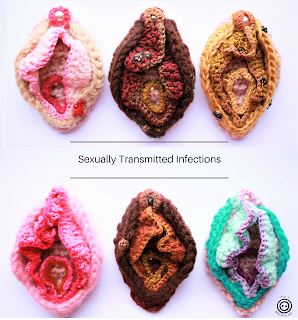In the context of STIs, asymptomatic means that a person can have an STI present in the body but does not show any visible symptoms, and does not experience any. STIs that can be asymptomatic include: Gonorrhea, Chlamydia, Trichomonasis, Human Papillomavirus, Herpes Simplex 1 (oral) and Herpes Simplex 1 (anal/genital), Hepatitis B+C and Human Immunodeficiency Virus (HIV).
When STIs do show symptoms they can be: urethral like burning during urination; cervical like vaginal discharge; anogenital lesions like herpes blisters; pelvic inflammatory disease that includes lower abdominal pain; vaginal erythema (pain, soreness, burning rawness of the vaginal canal and opening); nausea; diarrhea; and fever to name a few.
While it is important to be able to recognize STI symptoms it is also important to remember that not all STIs will show symptoms and that asymptomatic STIs can still be passed from one person to another. Furthermore, even when they do show symptoms sometimes they can be mistaken as something else, like a cold or fever. So getting tested as best suits our sexual and drug use history is one way of knowing our STI status.
If you live in Ontario, even if you are not a citizen or permanent resident, there are clinics and community health centers where you can get access to testing and treatment ina number of languages. To find a clinic near you check: http://sexualhealthontario.ca/find-a-clinic/ or call toll free: 1 (800) 688-2437








